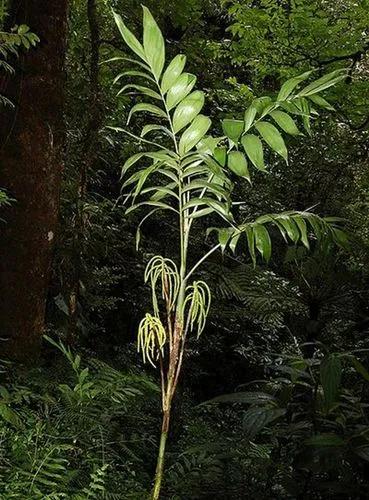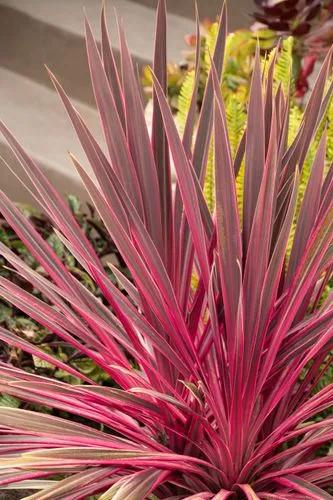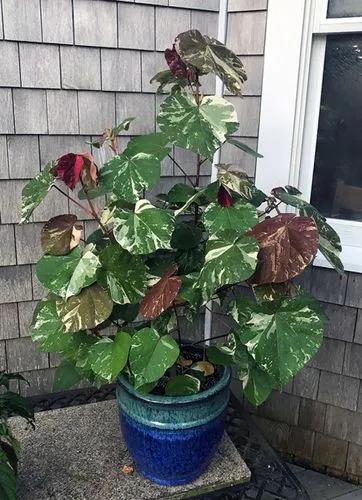With its elongated and perforate foliage, Baltic Blue Pothos has won the hearts of many plant lovers worldwide. This tropical greenie is sure to add a touch of freshness to the dwelling, no matter whether you live in a shaded area or a sunny place.
Baltic Blue Pothos Care
Epipremnum pinnatum ‘Baltic Blue’



Commonly known as Baltic Blue Pothos, Epipremnum pinnatum Baltic Blue is a tropical plant coming from Asia and Australia. This plant is a cultivar of the Epipremnum Pinnatum, and it can grow quite tall. Grown indoors, Baltic Blue Pothos can reach up to 10-12 feet (3-3.5 m) in height. The plant's leaves are deep-green in color and have a glossy texture. It has an elongated shape and perforated appearance, which make the greenie resemble a popular Monstera. Baltic Blue Pothos does not usually produce blooms and is mostly grown for its foliage.
How to Care for the Plant

Water

Give your greenie a drink when half of the soil dries out. It’s important to maintain an appropriate watering routine and not waterlog the plant so as not to cause root rot issues.

Pruning

It’s not necessary to prune Baltic Blue Pothos; however, you can practice it to maintain the plant’s shape. Remove the desired branches with sharp scissors. It's best to prune in early spring.

Fertilizer

It’s recommended to give your leafy greenie extra feeding once a month during the spring-summer active growth period. Dilute a balanced 10-10-10 NPK fertilizer to the half-recommended dose and feed the plant.

Sunlight

It’s best to keep this plant in a sunny place with indirect light. It can also tolerate low light conditions; however, the foliage it develops will lack fenestrations.

Soil

Baltic Blue Pothos feels best in an acidic environment with 5.5-6.5 pH level. It’s recommended to amend soil drainage by mixing in some perlite or vermiculite. Additionally, put 1 in (3 cm) of pebbles at the bottom of the pot.

Propagation

Stem cutting is the fastest and easiest way to propagate Baltic Blue Pothos. Take a healthy 4-6 inch (10-15 cm) long stem and remove the lover leaves. Remember to cut under the node. Place the cut end into a glass filled with water and keep it in a bright place under indirect light. The white roots should appear in several weeks, and once they reach at least 1 in (2.5 cm) long, the new greenie is ready for planting into the ground.

Temperature

A mild temperature of 65-80°F (18-26°C) is what Baltic Blue Pothos enjoys. It’s also recommended to mist it regularly, as tropical plants prefer higher humidity levels. Exposing the plant to a temperature below 55°F (13°F) can damage it.

Container

Growing Baltic Blue Pothos in a container, opt for a 2 times bigger pot than the current root ball. It’s important to choose a container with drainage holes to allow excess water to flow out easily. As for materials, choose a pot made of plastic or glazed ceramics not to let moisture evaporate too quickly.

Fun fact

The plant gets its name from the ability to obtain a bluish shade with age. Contrary to other Pothos species, Baltic Blue Pothos develops cuts on the leaves far earlier.

Popularity

479 people already have this plant 49 people have added this plant to their wishlists

Common pests

Baltic Blue Pothos can fall victim to pests like spider mites, thrips, scales, and mealybugs, which cause stunted growth. Regularly check the plant for signs like webbing or gnawed, yellowing foliage to detect pests as soon as possible. Treat the plant with an insecticide from a local garden store according to the instructions on the label.

Frequent diseases

Yellowing foliage and brown leaf spots are the signs of fungal infection coming from overwatering. In case you spot such signs, replant the greenie with fresh soil and treat it with a fungicide.

Botanist’s tips

Discover more plants with the list below
Popular articles






